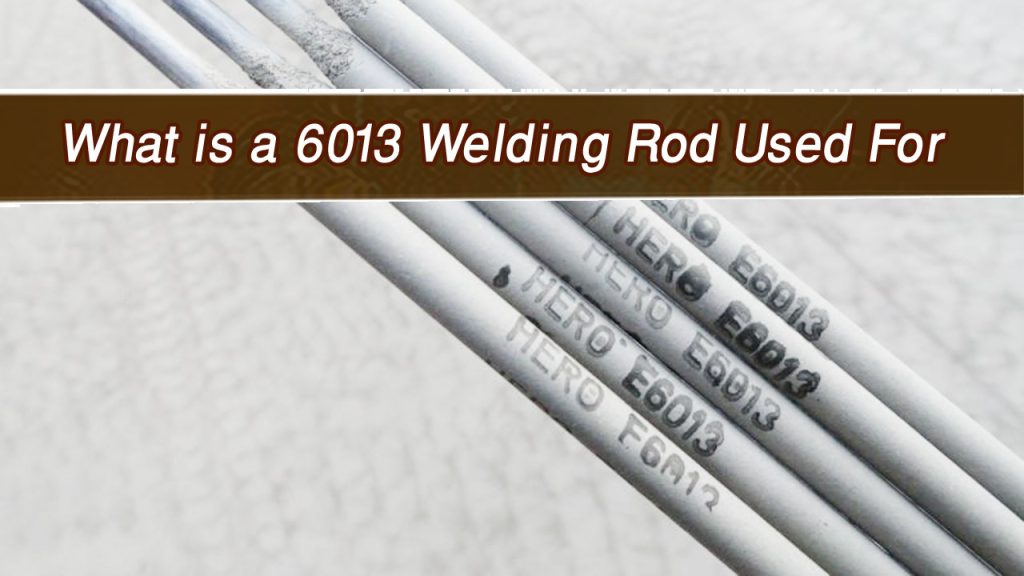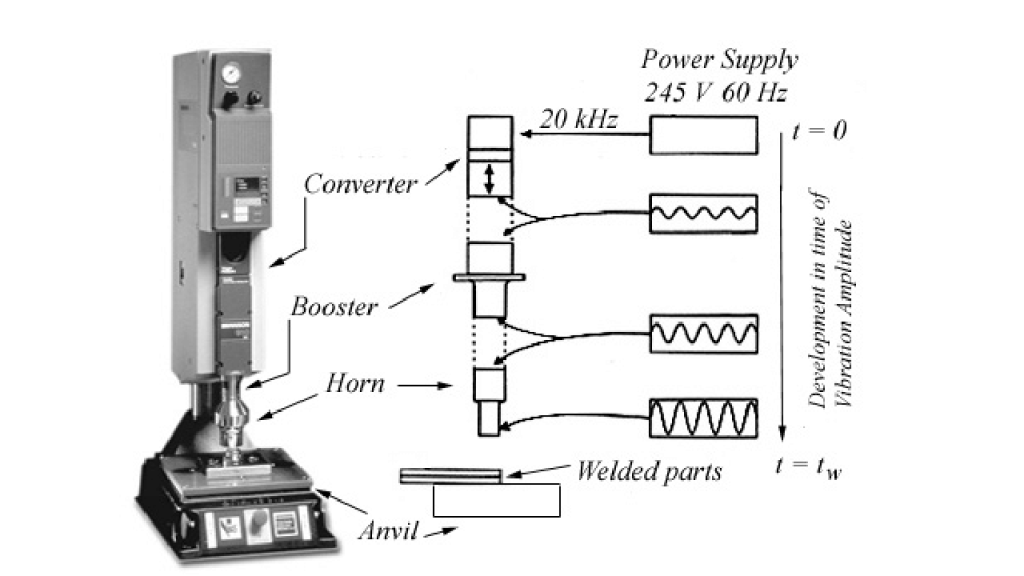If you’ve spent any time in welding, you’ve likely heard about the 6013 welding rod. It’s a versatile and user-friendly choice that many welders, including myself, turn to for a wide range of projects. Whether you’re just starting out or are a seasoned pro, understanding what the 6013 welding rod is used for can make a big difference in the quality of your work.

This rod is known for its smooth arc and all-position capability, making it a staple in workshops and construction sites alike. In this article, I’ll walk you through everything you need to know about the 6013 welding rod, from its features to its applications and techniques.
The 6013 Welding Rod
To really appreciate what this rod can do, let’s break down its name and features.
What Does “6013” Mean?
The numbers in welding rod names aren’t random—they tell you a lot about the rod’s characteristics. For the 6013 rod:
- 60: Indicates the tensile strength of the weld, which is 60,000 pounds per square inch (psi).
- 1: Shows that the rod can be used in all welding positions (flat, horizontal, vertical, and overhead).
- 3: Refers to the type of flux coating, which affects arc stability, slag removal, and ease of use.
Characteristics of the 6013 Welding Rod
- Smooth Arc: Produces a stable and smooth arc, making it easy to control.
- All-Position Use: Works well in any welding position, offering flexibility for different projects.
- Easy Slag Removal: The flux coating produces slag that’s easy to chip away, leaving a clean weld.
- Low Penetration: Best for thin metals or light-duty work, as it doesn’t penetrate deeply.
Applications of the 6013 Welding Rod
The 6013 welding rod is incredibly versatile, but it’s especially useful in specific scenarios.
Light Fabrication Work
If you’re working on thin or light-gauge metals, the 6013 rod is perfect. Its low penetration minimizes the risk of burn-through, ensuring a clean and consistent weld. This makes it ideal for:
- Metal furniture
- Small automotive repairs
- Light structural components
DIY and Hobby Projects
For DIY enthusiasts, the 6013 rod is a go-to choice. It’s forgiving and easy to use, even if you’re just starting out. Whether you’re crafting decorative metal pieces or repairing household items, this rod gets the job done without requiring advanced skills.
Sheet Metal Welding
Sheet metal requires precision, and the low penetration of the 6013 rod makes it a great match. It ensures a neat weld without compromising the integrity of the thin material.
General Maintenance and Repair
From farm equipment to basic machinery, the 6013 welding rod is a reliable option for maintenance work. Its ease of use and versatility make it a practical choice for quick repairs.
Training and Practice
If you’re learning to weld, the 6013 rod is a fantastic starting point. It’s forgiving and produces predictable results, allowing you to focus on improving your technique.
Advantages of Using a 6013 Welding Rod
The popularity of the 6013 rod isn’t just hype—it’s earned its spot as a favorite among welders. Here’s why:
Ease of Use
One of the biggest advantages of the 6013 rod is how user-friendly it is. Whether you’re a beginner or a seasoned pro, you’ll appreciate its smooth arc and clean finish.
All-Position Capability
Being able to weld in any position is a major plus. Whether you’re working overhead or on a flat surface, the 6013 rod delivers consistent results.
Clean Welds
The slag produced by the 6013 rod is easy to remove, leaving behind a smooth and professional-looking weld. This is especially important for projects where appearance matters.
Versatility
From light fabrication to repair work, the 6013 rod can handle a wide variety of tasks. Its versatility makes it a must-have in any welder’s toolkit.
Limitations of the 6013 Welding Rod
While the 6013 rod is fantastic in many situations, it’s not perfect for every job. Here are a few things to keep in mind:
Low Penetration
The shallow penetration of the 6013 rod means it’s not suitable for heavy-duty or thick materials. For those projects, you’ll need a rod with deeper penetration, like the 7018.
Not Ideal for Structural Work
While it’s great for light fabrication, the 6013 rod isn’t the best choice for load-bearing or critical structural applications.
Requires Clean Surfaces
For optimal results, the base metal should be clean and free of rust, oil, or paint. This rod doesn’t perform well on dirty or heavily corroded surfaces.
Tips for Welding with a 6013 Rod
If you want to get the most out of your 6013 welding rod, here are some tips to keep in mind:
Set the Right Amperage
The amperage setting depends on the rod’s diameter and the material thickness. For example, a 1/8-inch 6013 rod typically works best at 90-130 amps.
Maintain a Steady Hand
Keep a consistent arc length and travel speed. This ensures an even weld bead and minimizes the risk of defects.
Work in Short Sections
If you’re welding thin metal, work in short sections to avoid overheating and distortion.
Use Proper Ventilation
The flux coating produces fumes, so always weld in a well-ventilated area to protect your health.
Common Issues and How to Solve Them
Even with the best preparation, you might run into challenges when using a 6013 rod. Here’s how to troubleshoot:
Porosity in the Weld
Porosity can occur if the base metal is dirty or if there’s excessive moisture in the rod. Ensure a clean surface and store rods in a dry place.
Uneven Beads
Uneven weld beads are often the result of inconsistent travel speed. Practice maintaining a steady pace to improve bead appearance.
Rod Sticking to the Metal
If the rod keeps sticking, it might be due to incorrect amperage settings. Adjust the amperage to ensure a smooth arc.
Conclusion
The 6013 welding rod is a versatile and user-friendly option that’s perfect for a wide range of applications. From light fabrication work to DIY projects, its smooth arc and all-position capability make it a favorite among welders of all skill levels.
While it’s not ideal for heavy-duty or structural work, its ease of use and clean welds make it a valuable tool in any welding arsenal. By understanding its strengths and limitations, you can make the most of this reliable rod.
Whether you’re just starting out or looking to refine your technique, the 6013 rod is a great choice for mastering the art of welding.
FAQs
What materials can I weld with a 6013 rod?
The 6013 rod works best on thin to medium-gauge mild steel.
Can I use a 6013 rod for vertical welding?
Yes, the 6013 rod is suitable for all welding positions, including vertical.
What’s the difference between a 6013 and a 7018 rod?
The 6013 rod has lower penetration and is easier to use, while the 7018 rod offers deeper penetration and higher strength for heavy-duty applications.
Do I need a specific type of welding machine for a 6013 rod?
No, the 6013 rod is compatible with most AC and DC welding machines.
How do I store 6013 welding rods?
Store them in a dry place to prevent moisture absorption, which can affect performance.

Endow Russel the owner chief editor of giftendow.com . I am a mechanical engineer and assign to an local firm with much experience in welding and industrial equipment.

